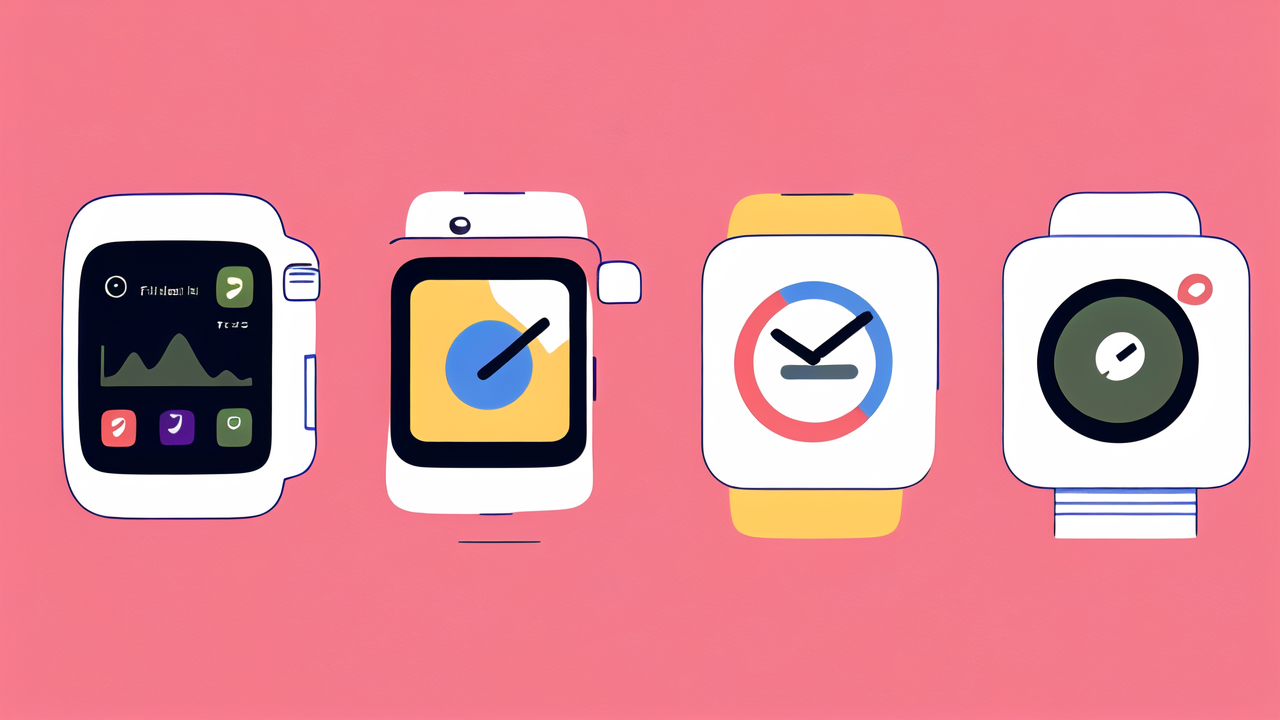Understanding the Market: The Rise of Wearable Technology in the United States
The Evolution of Wearable Technology
Wearable tech has come a long way in recent years. It started with simple pedometers and has evolved into smart devices. These gadgets can now track various health metrics and even connect to our phones.

The first wearables were bulky and had limited functions. Today, they are sleek and packed with features. Many can monitor heart rate, sleep patterns, and daily activity levels. Some even offer GPS tracking and mobile payments.
As technology improves, wearables are becoming more accurate and user-friendly. They are no longer just for tech enthusiasts. Now, people of all ages use them to improve their health and fitness.
Key Players and Brands in the Wearable Market
The wearable market is growing fast, with many brands competing for attention. Some of the top players include:
- Apple: Known for the Apple Watch, a leader in smartwatch technology
- Fitbit: Offers a range of fitness trackers and smartwatches
- Garmin: Popular among athletes for its sports-focused devices
- Samsung: Provides Galaxy Watch series with various health features
- Fila: Combines fashion with basic fitness tracking in their watches
Each brand has its strengths. Apple focuses on seamless integration with iPhones. Fitbit excels in fitness tracking. Garmin targets serious athletes. Samsung offers versatile options for Android users.
Fila, known for sportswear, has entered the market with stylish, affordable watches. They cater to those who want basic tracking without complex features.
Assessing Your Needs: What Do You Look for in a Wearable?
The Importance of Durability and Design in Wearable Technology
When choosing a wearable, durability and design are crucial factors. A device that can't withstand daily wear is not practical. Look for water-resistant or waterproof options if you plan to swim or shower with it.

The design should fit your lifestyle. Do you prefer a classic watch look or a modern fitness band? Consider the size and weight too. A bulky device might be uncomfortable for all-day wear.
Materials matter for both durability and comfort. Some use high-quality plastics, while others opt for metal or glass. Think about which would suit your needs best.
Remember, a wearable is often visible. Choose a design that matches your style and makes you want to wear it every day.
Advanced Features vs. Basic Tracking: Finding the Balance
Wearables offer a wide range of features. Some provide basic step counting and calorie tracking. Others include advanced metrics like VO2 max and stress levels.
Consider what data is most useful to you. If you're a casual user, basic tracking might be enough. For serious athletes, advanced features could be worth the investment.
Think about battery life too. More features often mean shorter battery life. Decide if you're willing to charge daily or prefer a device that lasts longer.
Some key features to consider include:
- Heart rate monitoring
- GPS tracking
- Sleep analysis
- Smartphone notifications
- Music control
- Mobile payments
Choose a device that offers the features you'll actually use. Don't pay for advanced options if you won't use them regularly.
Personal Use Cases: From Fitness Enthusiasts to the Casual User
Different users have different needs when it comes to wearables. Fitness enthusiasts might prioritize accurate workout tracking and heart rate monitoring. They may want a device with built-in GPS for outdoor activities.
Casual users might prefer a simpler device. One that tracks basic steps and sleep patterns could be enough. They might value long battery life and ease of use over advanced features.
For those focused on health, features like continuous heart rate monitoring and stress tracking are important. Some wearables can even detect irregular heart rhythms.
Business professionals might look for devices that offer email notifications and calendar alerts. They may prefer a more stylish design that fits in at the office.
Consider your daily routine and fitness goals. Do you need motivation to move more? Or are you training for a marathon? Your use case will guide your choice.
A Deep Dive into Fila Watches and Smart Body Trackers
Fila Watches: Combining Style with Functionality
Fila watches offer a blend of style and basic functionality. They appeal to those who want a fashionable accessory with some smart features. These watches often have a classic look that works well in various settings.

Most Fila watches provide basic fitness tracking. This includes step counting, calorie burn estimates, and sometimes sleep monitoring. They're a good choice for those new to fitness tracking or who don't need advanced metrics.
The strengths of Fila watches include:
- Affordable pricing compared to high-end smartwatches
- Stylish designs that don't scream "fitness tracker"
- Long battery life, often lasting weeks or months
- Water resistance suitable for everyday wear
However, they may lack advanced features like GPS or heart rate monitoring. For many users, this trade-off for style and simplicity is worth it.
Smart Body Trackers: Analyzing Advanced Metrics for Peak Performance
Smart body trackers are designed for those who want detailed health and fitness data. These devices often pack advanced sensors into a compact form. They can track a wide range of metrics to help users optimize their performance.
Common features of smart body trackers include:
- Continuous heart rate monitoring
- Sleep stage analysis
- Stress level tracking
- VO2 max estimation
- Recovery time recommendations
- GPS for precise activity tracking
These devices are ideal for serious athletes or health-conscious individuals. They provide insights that can help users make informed decisions about their training and recovery.
Many smart trackers also offer guided workouts and personalized fitness plans. This can be like having a personal trainer on your wrist.
Integrating Wearables into Health and Wellness Programs
Wearables are becoming key tools in health and wellness programs. Many companies now offer them as part of employee wellness initiatives. They can encourage physical activity and help monitor overall health.
For individuals, wearables can be powerful motivators. They provide real-time feedback on activity levels and health metrics. This can encourage users to make healthier choices throughout the day.
Some ways to integrate wearables into health programs include:
- Setting daily step goals
- Tracking sleep patterns to improve rest
- Monitoring heart rate during workouts
- Using stress tracking features to manage mental health
- Participating in challenges with friends or coworkers
When choosing a wearable for health programs, consider data privacy. Look for devices with strong security features to protect your personal information.
Remember, the best wearable is one that you'll use consistently. Whether it's a stylish Fila watch or an advanced smart tracker, choose a device that fits your lifestyle and goals.




Leave a comment
This site is protected by hCaptcha and the hCaptcha Privacy Policy and Terms of Service apply.